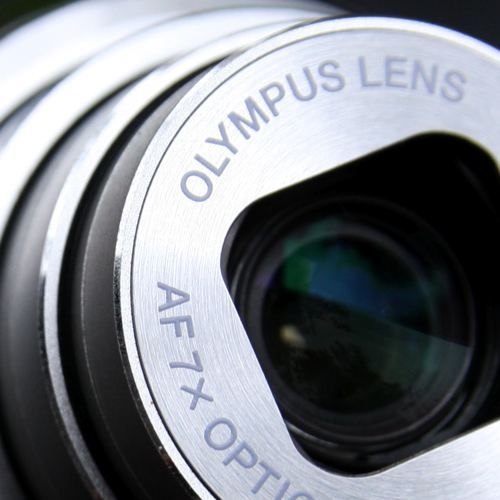The Olympus Mju 1010 is a 10-megapixel snapper with a 7x optical zoom, an all-weather case, and enough in-camera tech to keep you busy rattling off all the features for some time, but does it take good pictures? We spend some time snapping to find out.
Our quick take
The Olympus Mju 1010 is one of those models that is middle of the range in its offering compared to the competition. It will give you good images but nothing that is outstanding.
The guide mode is a nice idea, but frustratingly that it doesn't help you learn from it (a "give a man a fish he’ll eat for a day, teach him how to fish and he’ll eat forever" moment).
Where the camera's strengths lie is in that 7x optical zoom in a compact body and the technologies that help you take better pictures like the Shadow Adj.
So should you opt for the Olympus Mju 1010? Well you won't be disappointed, trouble is, you won't be blow away either.

Olympus Mju 1010 digital camera - 3.5 / 5
| FOR | AGAINST |
|---|---|
|
|
Larger than your average compact, the Mju 1010 is simple in its design and operation. The front is dominated by a large lens that gives you a range of 37-260mm in old camera money. It would have been nice to have a wider angle at the lower end, but then that zoom does come in handy.
Built quality is good. Around the back there is a 2.7-inch HyperCrystal LCD screen, a mode wheel, and a selection of buttons for changing the settings.
Everything is well laid out, it's easy to use and on the whole simple to understand what is going on. The mode wheel has enough resistance so you don't go scrolling through the modes out of control and all the buttons were responsive.
In the sunshine (what sunshine we could find in the UK) the screen was bright enough to see what was going on and this being an Olmypus Mju, the whole thing is weatherproof so odd spot of water doesn't mean you'll have a dead camera.
Turn it on and you'll be ready to go in under 2 seconds, ideal for sporting or wildlife moments, and we found the camera fast to respond in both focusing, saving images, and viewing them back.
The mode wheel offers a number of different options for the first timer and seasoned digital camera user alike. Those keen to get started straight away can opt for Auto that takes away virtually all choices bar flash, exposure, whether you want macro mode or something Olympus calls Shadow Adj.
"Shadow Adj" stands for Shadow Adjustment technology that, according to Olympus, makes a subject's face appear brighter even against backlight. In our tests we found the concept does work; the difference is subtle (see Wall-E pictures in gallery) but will go towards improving your final pictures if you've not got the time to light them properly (who has?).
Back to the mode wheel an there is a program mode where you have more control over ISO settings, white balance and the such, while the scene mode offers you 23 scene modes from the useful to the ridiculous.
Do you really need a dedicated mode for "Cuisine" for example, or what about "Auction" scene that captures three images sequentially at different exposures and saving them in the appropriate size eBay likes?
We can see some of the more random ones being useful: how about "Behind Glass" or "Self Portrait" for when you take pictures of yourself while still holding the camera?
Other modes besides movie and playback include the chance to look at your favourite images and interestingly for newcomers a guide that tries to answer your average camera questions like “how can I brighten the subject?”, or what to do when shooting at night. There are 14 most frequently asked questions answered, however rather than tell you so you can learn the camera just sets you up leaving you in the dark as to what it has actually done.
With the usual stack of face detection, image stabilising, anti-red eye and anything else you can think of technology, the Olympus Mju 1010 works hard to make sure you don't take a duff picture. That's not to say this is foolproof, but on the whole it does a good job as long as you are fair in your usage and follow standard photography guidelines. Shooting directly into the sun isn't going to make you any friends with the technology.
So what about picture quality? On the whole the results were good but not outstanding.
High levels of detail were captured in our test shots, especially in super macro mode (see beer bottle) although overall images were, on the whole, on the softer side than we would have perhaps liked. Noise levels are kept to a minimum until you start venturing over ISO 400.
To recap
You won't be disappointed, trouble is, you won't be blown away either
